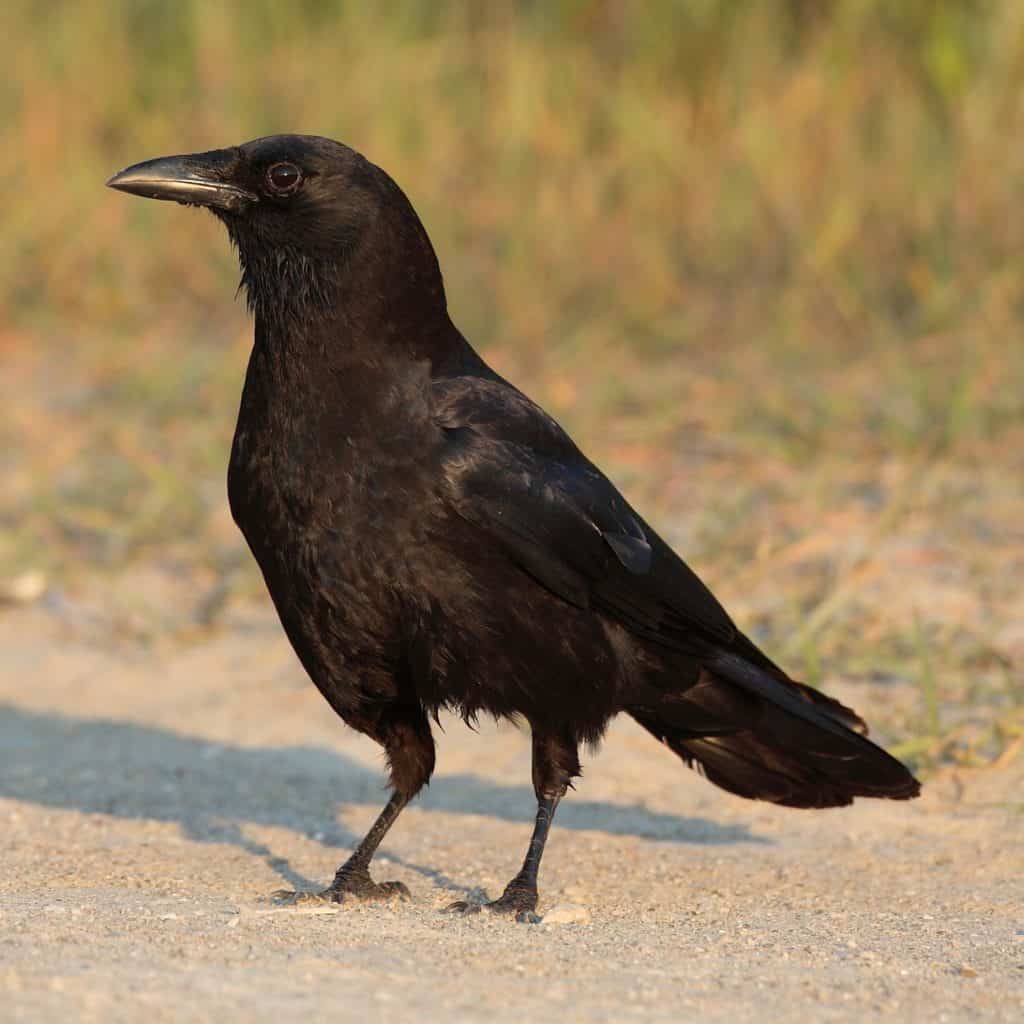Sporting Life

A Murder of Crows
Our Labrador pup Hobbes was swimming in the Little Magothy recently when I detected the first sounds of the battle. At first, I barely noticed, then finally the distant screaming of the large group of crows in the trees on the opposite shore alerted me to a serious conflict.
There were, roughly, over 50 birds eventually involved in the skirmish and the apparent violence of their activity gave immediate proof to the collective term for any group or flock of them, “a murder of crows.”
Crows have been a traditional and regulated hunting species managed by Maryland’s DNR with their own seasons, though not many people hunt them these days. Crows were hunted as a means of nuisance control in the region over the last century or so.
Though their noisy confrontations are rarely fatal, there was a definite battle going on that day near the river, of a size and intensity I hadn’t seen in many years. There seemed to be an audible majority of American crows in the melee and as I scanned the tree tops a group of a half dozen of the dark avians broke out and flew directly over me, confirming my suspicions. The lead bird was missing a few flight feathers and was frantically trying to outdistance its five pursuers.
Though all the birds were, visually, almost identical, those giving chase were calling out angrily in a distinctive accent. It was obvious to my ears that the aggressors were of the common or American crow species and they were harassing a single unfortunate fish crow, which steadily maintained its urgent flight to safety.
The fish crow is a particularly misunderstood bird mainly because most people don’t even realize that the unique species exists. Virtually indistinguishable in appearance from the American crow, the fish crow is a separate genus and is quite numerous in the region, especially over the last couple of decades. It has been the dominant species in my neighborhood for quite some time.
The two crows differ from each other in body size, the fish crow being slightly smaller, and in feeding characteristics, the fish crow preferring to forage for fish and shellfish, their remains and various seafood bits along shorelines, marshes and river beds.
The larger American crow is more omnivorous and aggressive and its population much more numerous. The only reliable way to differentiate the two species, however, is by their call sound. The caw caw caw of the American crow is clearer and crisper than the fish crow which has a more nasal quality or burr to its voice, almost a Scottish accent. If you hear the two calling simultaneously one can easily recognize a difference.
The West Nile Virus, which appeared in the U.S. in the late 1990s, had a big impact on all our crow populations but was especially fatal to the American crow. That species lost almost half of its population to the disease throughout the U.S. within very few years. It is now experiencing a strong rebound.
The fish crow, however, was more resistant to the virus and over time their numbers became dominant in many southeastern coastal and river prominent areas. Since in some ways I’m, at least subliminally, a bit of a fish crow myself, I’ve a preference for their company. Their unique nasal caws have always found a friendly echo in my ears.
Since that violent clash a few days ago, though, the shorelines have remained curiously silent of both species. Whether the aforementioned battle was one of actual territorial dominance or just a conflict of one flock migrating through another species’ home ground is uncertain.
Since the odds of their mutual integration is virtually nil, I can only hope that the home team retained its grip on our neighborhood. We’ll soon see.
*****
Fishfinder:
The rockfish bite that has developed in the mid-Bay area is a bit underwhelming, the fish are just barely legal and not particularly numerous. The best areas to find them are Swan Point and Hodges Bar north of the Mouth of the Chester, Love Point, Hacketts, the Mouth of the Severn, the West and areas at the Mouth of the Eastern Bay as well as the Bay Bridge. These areas are not a surprise to anyone and not any one place particularly excellent but all will hold some stripers early and late in the day. Anglers trolling small to medium sized bucktails and similar lures are finding larger fish here and there but most are 19 to 26 inches. Chum anglers are also finding rockfish in the same areas and getting quick limits, not so difficult with a one fish per person possession limit. White perch are numerous but small on lumps in the same areas as well as along the shorelines in most tributaries. The crabbing is off to a slow start once again. Though there are some nice sizes showing up, their numbers are decidedly less than forecast by DNR. Time will tell if there is to be any improvement in the overall situation.
